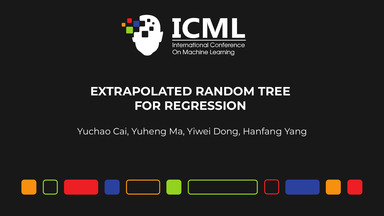Fair and Optimal Classification via Post-Processing
Jul 24, 2023
Speakers
About
To address the bias exhibited by machine learning models, fairness criteria impose statistical constraints for ensuring equal treatment to all demographic groups, but typically at a cost to model performance. Understanding this tradeoff, therefore, underlies the design of fair and effective algorithms. This paper completes the characterization of the inherent tradeoff of demographic parity on classification problems in the most general multigroup, multiclass, and noisy setting. Specifically, we show that the minimum error rate is given by the optimal value of a Wasserstein-barycenter problem. More practically, this reformulation leads to a simple procedure for post-processing any pre-trained predictors to satisfy demographic parity in the general setting, which, in particular, yields the optimal fair classifier when applied to the Bayes predictor. We provide suboptimality and finite sample analyses for our procedure, and demonstrate precise control of the tradeoff of error rate for fairness on real-world datasets provided sufficient data.To address the bias exhibited by machine learning models, fairness criteria impose statistical constraints for ensuring equal treatment to all demographic groups, but typically at a cost to model performance. Understanding this tradeoff, therefore, underlies the design of fair and effective algorithms. This paper completes the characterization of the inherent tradeoff of demographic parity on classification problems in the most general multigroup, multiclass, and noisy setting. Specifically, we…
Organizer
Like the format? Trust SlidesLive to capture your next event!
Professional recording and live streaming, delivered globally.
Sharing
Recommended Videos
Presentations on similar topic, category or speaker
Extrapolated Random Tree for Regression
Watch later
Yuchao Cai, …
Buying Information for Stochastic Optimization
Watch later
Mingchen Ma, …




